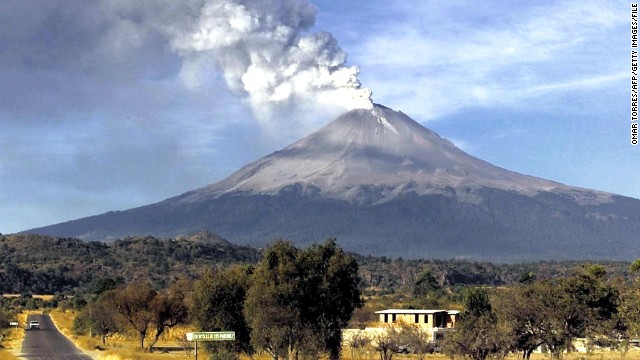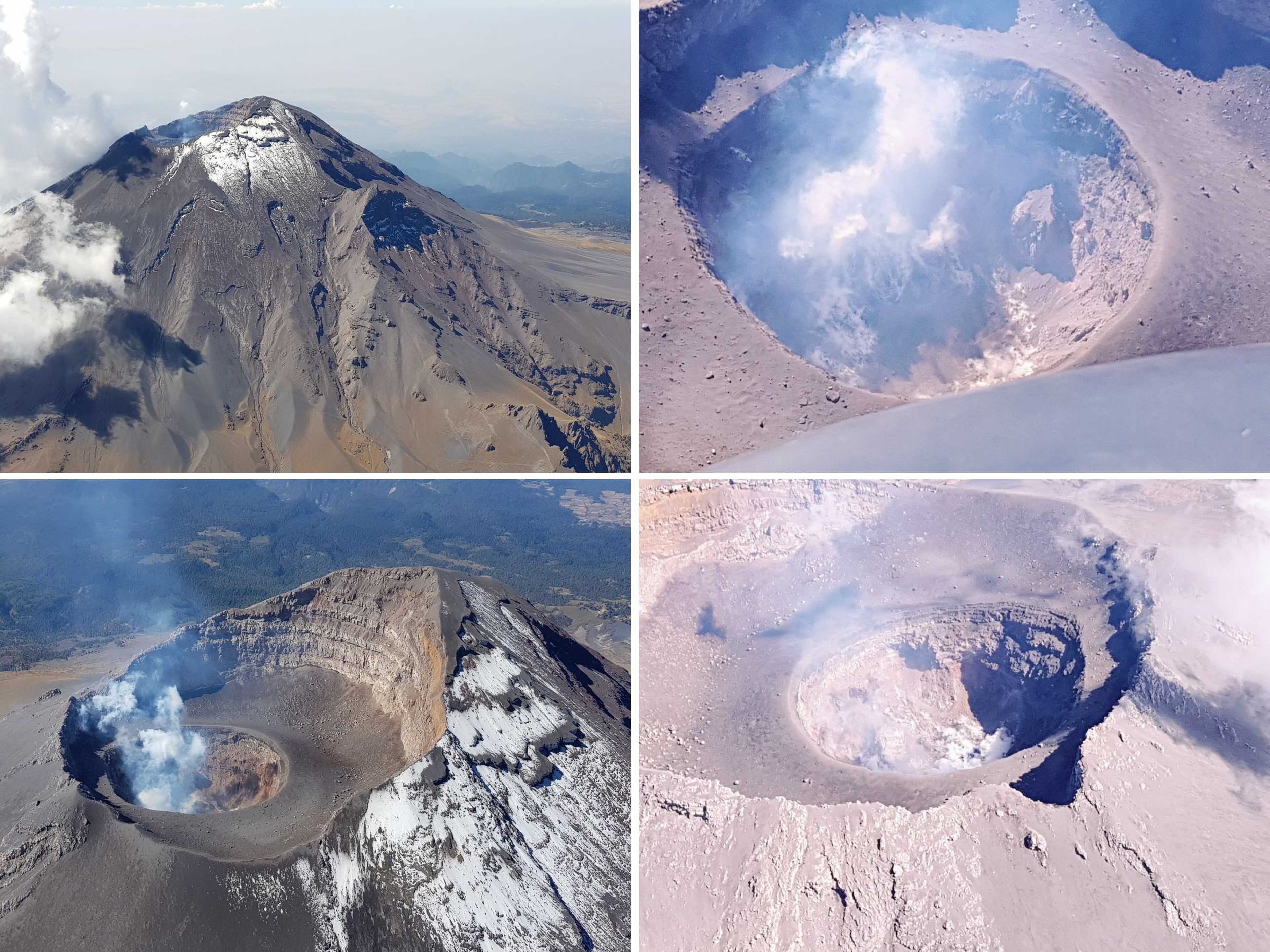(Bethsaida Colina)
 |
| Popocatepelt |
The Popocatépetl Volcano is located in the states of Puebla and Morelos, in central Mexico, and lies in the eastern half of the Trans-Mexican volcanic belt. It is the second highest peak in Mexico, after Citlaltépetl (Pico de Orizaba). The glacier-clad stratovolcano contains a steep-walled, 250-450 m deep crater. According to paleomagnetic studies, the volcano is about 730,000 years old. It is cone shaped with a diameter of 16 miles at its base, with a peak elevation of 17,880 ft. The crater is elliptical with an orientation northeast-southwest. The walls of the crater vary from 1,970 to 2,760 ft in height. The name Popocatépetl comes from the Nahuatl words popōca "it smokes" and tepētl "mountain", meaning Smoking Mountain. The volcano is also referred by Mexicans as El Popo or Don Goyo. The Popocatépetl is one of the most active volcanoes in Mexico and the most famous having had more than 15 major eruptions since 1519.
Hazards: Popocatépetl’s lava has historically been predominantly andesitic, but it has also erupted large volumes of dacite. Magma produced in the current cycle of activity tends to be a mixture of the two. Popocatépetl, which is a complex newer volcano over several older volcanoes, has historically produced large eruptions every 500 to 1,000 years. An eruption in the 1660s plunged the city of Puebla into darkness for three days as ash filled the sky. Since the volcano’s activity resumed in 1994, several medium-size eruptions have sent ash as far as Mexico City and created plumes almost four miles high. An explosion in 1996 killed five mountain climbers. Also some hazards include the destruction of crop and vegetation, shortened periods of rains and contaminated water surfaces. People living around this region are likely to suffer skin infections and respiratory complications from the substances released in the atmosphere.
 |
| Popocatépetl volcano showing degassing and a small dome within the summit crater. Photos taken during an overflight on 16 March 2018 courtesy of Luis Felipe Puente at Protección Civil del Estado de México. |
The Popo is currently active after being dormant for about half of last century.
The Popo last explosion was on March 19, 2019 sending a plume of ash and gas more than two miles into the inky sky and raining glowing rocks onto its slopes. Since the Popo is an active volcano, we can expect more eruptions or explosions.
https://volcano.si.edu/volcano.cfm?vn=341090
http://www.cenapred.gob.mx/cgi-bin/popo/reportes/ultrepi2.cgi
https://volcano.si.edu/volcano.cfm?vn=341090
http://www.cenapred.gob.mx/cgi-bin/popo/reportes/ultrepi2.cgi
No comments:
Post a Comment